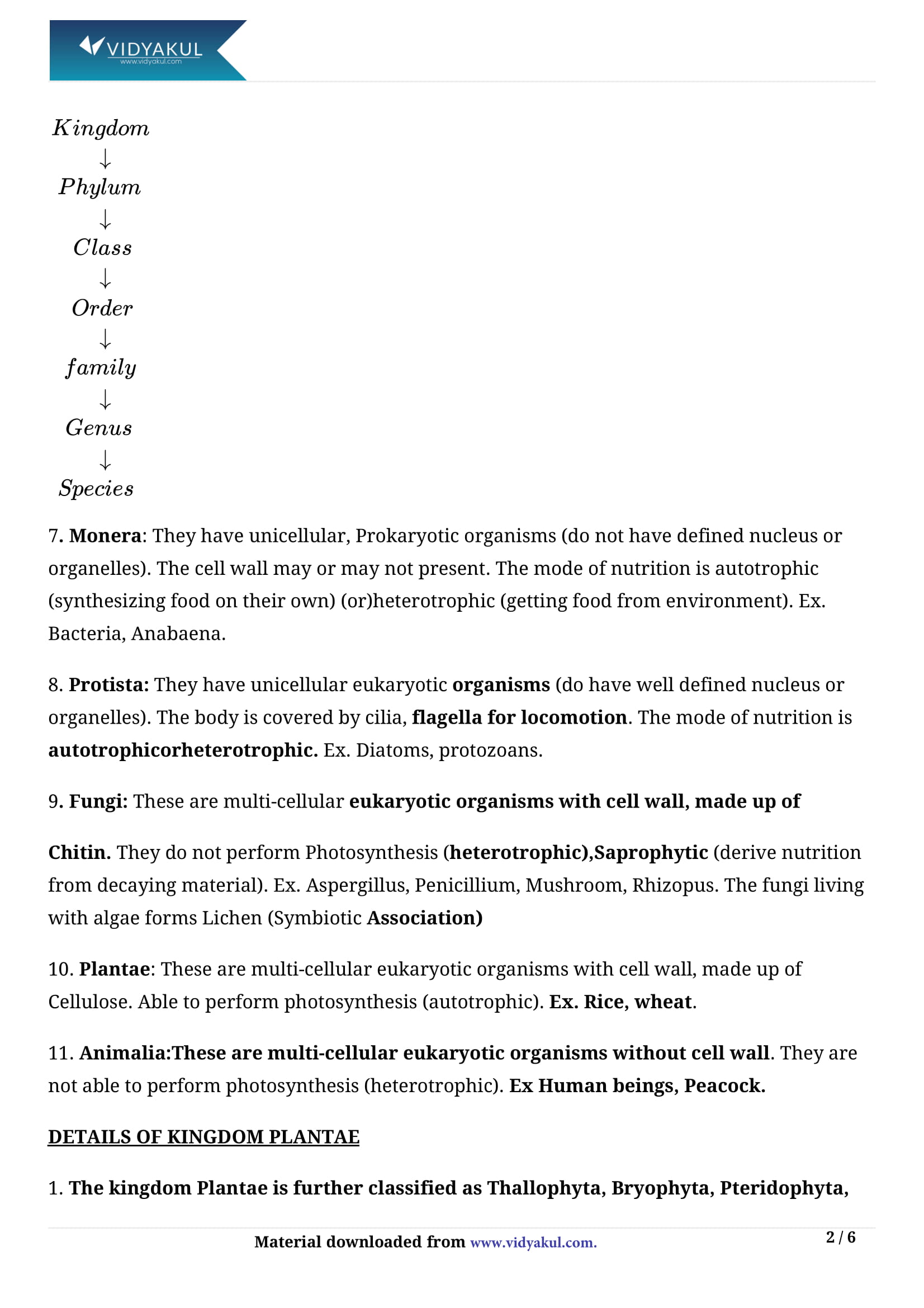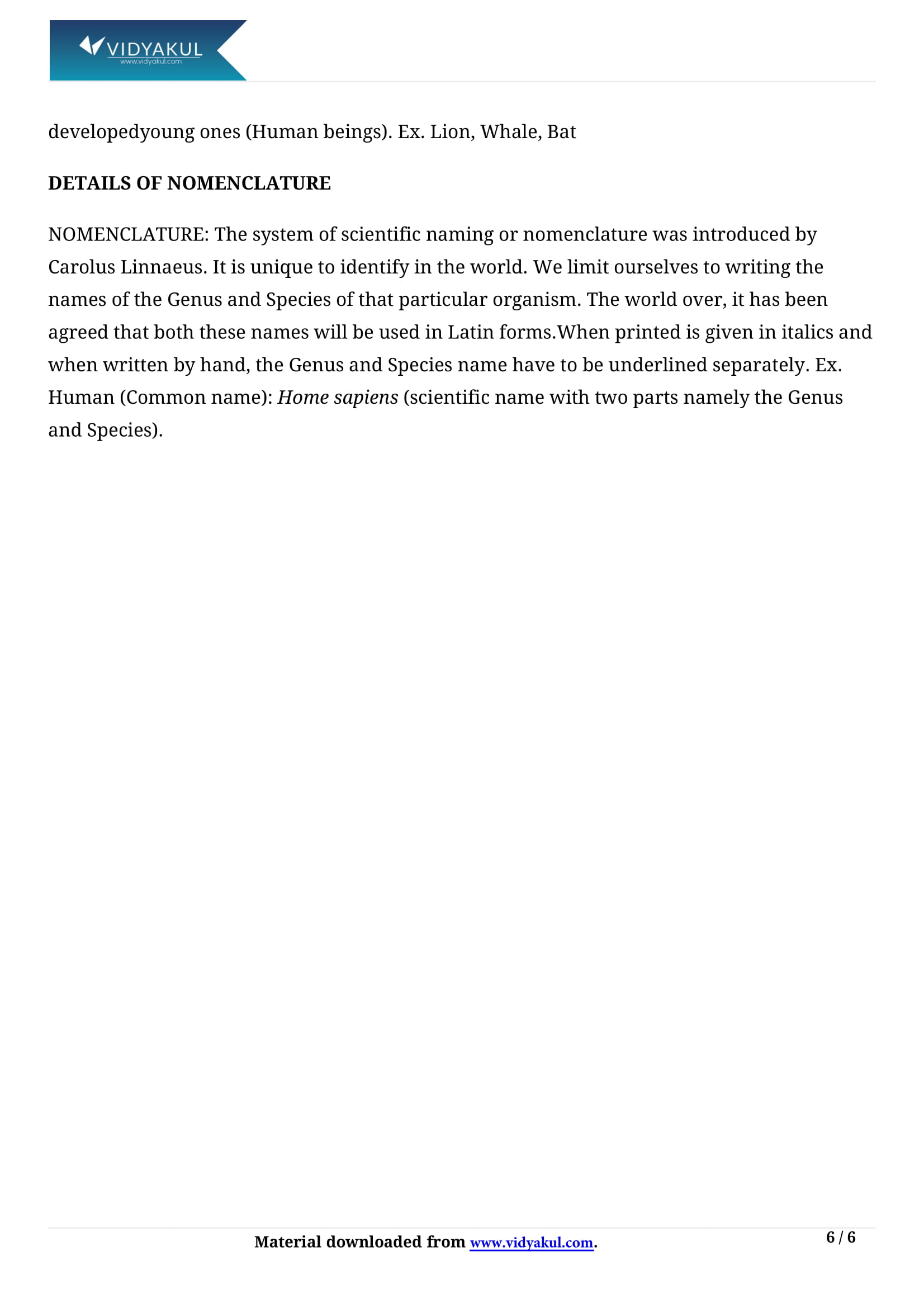Diversity in Living Organisms Class 9 Notes

Chapter 7 Diversity in Living Organisms
Chapter 7 of Class 9 covers the diversity of living organisms. It tells about the classification and evolution of various plant and animal kingdoms. Chapter 7, NCERT notes for Grade 9 Science, will help students research their strengths and weaknesses and learn how to write responses effectively.
Vidyakul academic experts develop these NCERT notes after extensive research and analysis. NCERT 9th grade notes help students understand different approaches to questions and how to answer them. Students can keep the NCERT notes to Chapter 9 for the annual exam. Scroll down to learn more about NCERT notes for Class 9, Chapter 7.
CBSE CLASS 9th CH-7
Points to Remember
We have provided some of the important points related to NCERT Class 9 Science Chapter 7 as mentioned below:
This variety of living beings on the Earth is called Biodiversity.
Biologists have identified and classified more than 1.7 million species of organisms on this Earth.
Most of these species are found in the tropical regions of the world.
The variety of living organisms existing on the Earth is called Biodiversity.
A species is a group of organisms of a particular kind whose members can interbreed among themselves to produce fertile young ones.
Unicellular organisms are organisms which are made of a single cell.
Topics and Sub-topics
In this chapter, students learn about the classification of living organisms. This discussion will lead to the study of taxonomy and evolution as well as the hierarchy of taxonomic groups. Students also learn more about the five precepts of classification.
Before moving on to Chapter 7, NCERT notes for Class 9, let's briefly review the topics and subtopics covered in this chapter:
Few Important Questions
What is ‘Taxonomy’?
Taxonomy is the science of naming, describing and classifying organisms and includes all plants, animals and microorganisms of the world.
What does ‘Gram-positive bacteria’ mean?
A bacteriologist named Christian Gram created a test that could determine if a bacterium had a thick, mesh-like membrane called peptidoglycan. Bacteria with thick peptidoglycan are called gram-positive.
What is a ‘Marine Sponge’?
Marine sponges are sessile animals that look like plants. They attached themselves to a rock, shell or seafloor when they are young and there live for the rest of their lives.
This variety of living beings on the Earth is called Biodiversity.
Biologists have identified and classified more than 1.7 million species of organisms on this Earth.
Most of these species are found in the tropical regions of the world.
The variety of living organisms existing on the Earth is called Biodiversity.
A species is a group of organisms of a particular kind whose members can interbreed among themselves to produce fertile young ones.
Unicellular organisms are organisms which are made of a single cell.
What is ‘Taxonomy’?
What does ‘Gram-positive bacteria’ mean?
What is a ‘Marine Sponge’?
Learn more about it in Diversity in Living Organisms Class 9 Notes pdf.
Download this solution for FREE Download this PDF









